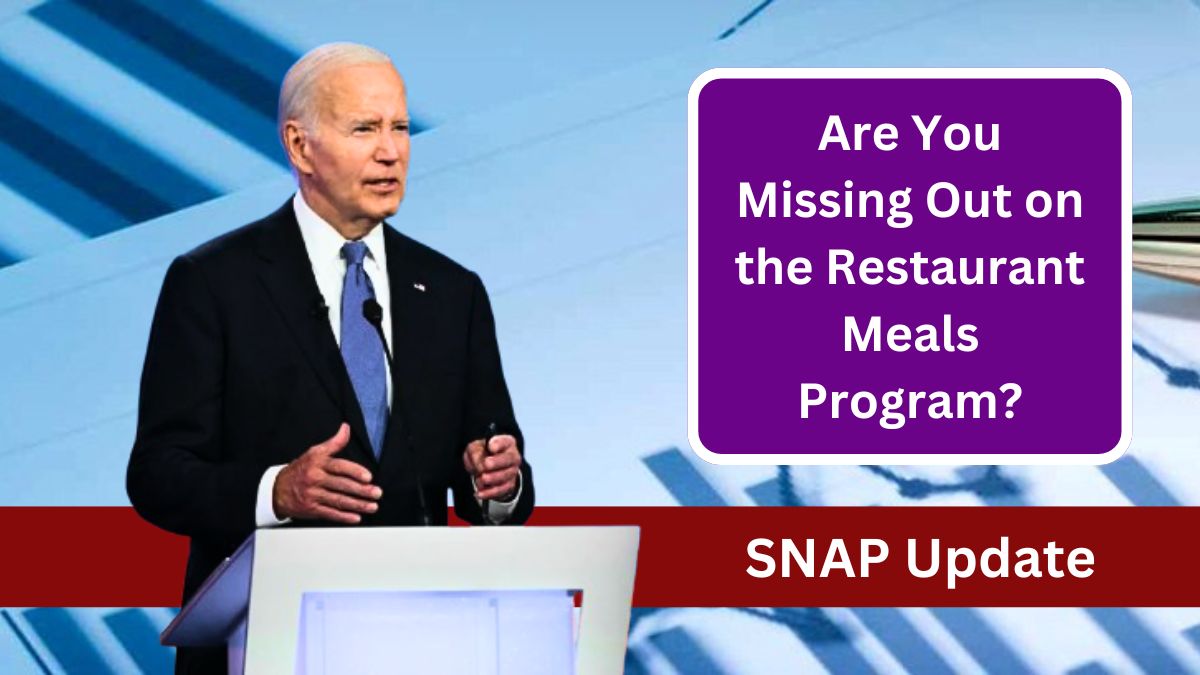The Supplemental Nutrition Assistance Program (SNAP), formerly known as the Food Stamps program, provides crucial food assistance to millions of low-income Americans. Beyond monthly financial assistance, SNAP offers a range of additional perks, including access to the Restaurant Meals Program (RMP) in certain states. This program allows qualifying SNAP recipients to use their benefits at participating restaurants, an invaluable option for those who may not have access to cooking facilities.
This article explores SNAP’s RMP, who qualifies for it, and how it works.
Overview
SNAP provides monthly benefits to help eligible recipients buy groceries. After the 2025 cost-of-living adjustment (COLA), an individual can receive up to $292 per month, with an average benefit of $199, according to the Center on Budget and Policy Priorities (CBPP). SNAP participants also benefit from additional perks, like discounts on museum tickets or internet services. However, for individuals with limited or no access to cooking facilities, the RMP provides an alternative solution.
Summary
| SNAP Benefit | Description |
|---|---|
| Maximum Benefit (2025) | Up to $292 per month |
| Average Benefit | Around $199 per month (CBPP) |
| Additional Perks | Museum discounts, internet service reductions |
| RMP Access | Available in certain states for specific SNAP recipients who qualify under RMP requirements |
Restaurant Meals Program
The Restaurant Meals Program is a SNAP extension designed for individuals who cannot prepare meals at home due to specific circumstances such as homelessness, age, or disability. This program allows eligible recipients to use SNAP benefits at approved restaurants in participating states, making it easier for these individuals to access nutritious, prepared meals.
Eligibility
To qualify for the RMP, individuals must meet certain criteria. Here’s a look at the requirements:
- Residence in a Participating State: Only certain states offer RMP. Recipients must reside in one of these states to qualify.
- Household Qualifications: Every household member must meet at least one of the following conditions:
- Be 60 years or older.
- Be a disabled individual receiving government blindness or disability payments.
- Be homeless, with limited or no access to cooking facilities.
- Be the spouse of a qualifying individual.
Participating States
| State | Program Availability |
|---|---|
| Arizona | Available |
| California | Available |
| Illinois | Available |
| Maryland | Available |
| Massachusetts | Available |
| Michigan | Available |
| New York | Available |
| Rhode Island | Available |
| Virginia | Available |
Residents in these states who meet RMP qualifications can use their SNAP benefits at approved restaurants, adding a level of flexibility for those unable to cook.
RMP Benefits
The RMP provides a critical service for eligible individuals, making it easier to access hot, prepared food. For many who struggle to cook or lack food storage options, RMP serves as a practical alternative to traditional grocery purchases. Approved restaurants serve affordable meals that SNAP recipients can purchase with their benefits, offering both convenience and a nutritional lifeline.
Restaurant Requirements
Restaurants interested in participating in the RMP must meet several criteria:
- State Participation: They must be located in a state that offers RMP.
- State Approval: Restaurants need state approval and must sign an agreement with the Food and Nutrition Service (FNS).
- Authorization by FNS: Finally, restaurants must gain authorization from FNS to accept SNAP benefits.
This approval process ensures that participating restaurants meet quality and affordability standards, making it easier for eligible recipients to access affordable, prepared meals.
RMP vs. Standard SNAP
| Feature | Standard SNAP | Restaurant Meals Program |
|---|---|---|
| Location | Grocery stores, farmers’ markets | Participating restaurants in select states |
| Eligibility | General low-income individuals | Elderly, disabled, homeless, or spouses of qualified members |
| State Requirement | Nationwide | Limited to specific states |
| Use of Benefits | Groceries | Prepared meals |
RMP Is Important
The Restaurant Meals Program plays a vital role in enhancing food accessibility for those with limited cooking abilities. By addressing the needs of elderly, disabled, and homeless individuals, RMP bridges a critical gap, allowing these groups to have more convenient, nutritious options.
For participating restaurants, RMP also offers a chance to reach a new customer base and support their local community. By serving nutritious, affordable meals to vulnerable populations, these restaurants contribute to the well-being of those who may otherwise struggle to access balanced meals.
SNAP’s Restaurant Meals Program stands as a valuable addition for eligible recipients who cannot cook or store food at home. Currently available in select states, RMP provides convenient access to hot meals for the elderly, disabled, and homeless. With benefits that extend beyond financial aid, SNAP continues to support Americans facing food insecurity by adapting to their varied needs. As the program expands, more people could gain access to this lifeline in the future.
FAQs
Who qualifies for SNAP’s Restaurant Meals Program?
Elderly, disabled, or homeless individuals in select states.
Can all states use SNAP at restaurants?
No, only states with an RMP allow restaurant access.
How much SNAP can I receive monthly?
The maximum monthly benefit is $292 as of 2025.
Do all household members need to qualify for RMP?
Yes, all household members must meet RMP eligibility.
How can a restaurant join RMP?
Restaurants need state approval and FNS authorization.











